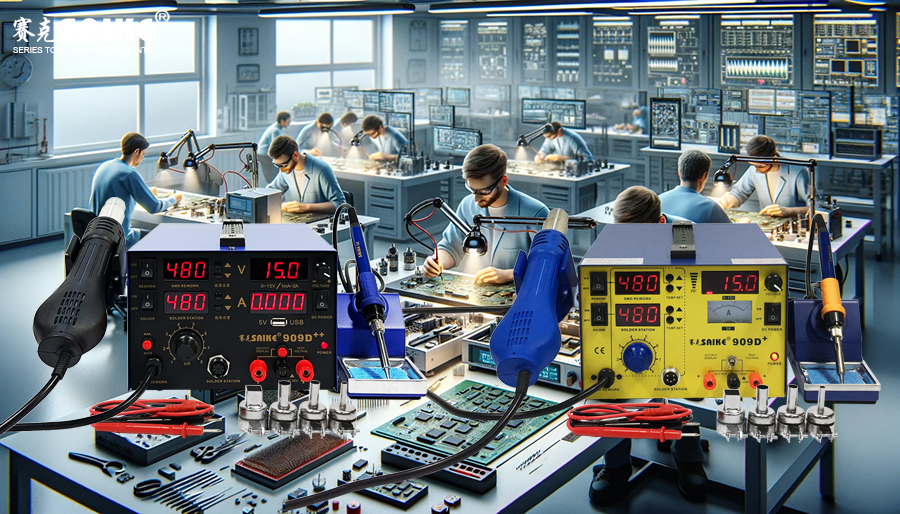
SK-YJ000RFSHY-KP 100041
DC stabilized power supplies play a crucial role in various electronic devices, and the inspection and replacement of their cables and connectors are essential to ensure the normal operation of the equipment. This article will detail the inspection and replacement methods for DC stabilized power supply cables and connectors, helping you ensure the stability and reliability of the power system.
I. Inspection Methods for DC Stabilized Power Supply Cables and Connectors
1.Visual Inspection
Before conducting any electrical inspections, a visual inspection should be performed to identify any obvious damage or wear.
– Inspect the cable insulation:
– Observe if there are any damages, cracks, or signs of aging on the insulation layer.
– If any abnormalities are found on the insulation layer, stop using it immediately and replace it.
– Check the connectors:
– Confirm if the connectors are loose or corroded.
– Observe if there are any signs of oxidation or ablation on the metal parts of the connectors.
2.Electrical Inspection
Use test tools such as a multimeter to perform electrical inspections and ensure the electrical performance of the cables and connectors.
– Resistance measurement:
– Use a multimeter to measure the resistance of the cables and connectors. Under normal circumstances, the resistance value should be close to zero.
– If the resistance value is too high or unstable, it indicates a problem with the cable or connector, which needs to be replaced.
– Voltage measurement:
– Measure the voltage at the power output to ensure that the voltage value matches the rated output of the stabilized power supply.
– If the voltage value does not match the rated value, it may be due to problems with the cable or connector, or the power supply itself.
3.Dynamic Inspection
Through dynamic inspection, the reliability of cables and connectors can be tested under actual operating conditions.
– Load test:
– Connect a suitable load and observe the stability of the power supply output voltage.
– If the output voltage fluctuates significantly during load changes, it may be due to poor contact between the cable and connector.
II. Replacement Methods for DC Stabilized Power Supply Cables and Connectors
1.Preparation for Replacement
Before proceeding with the replacement, prepare the necessary tools and materials.
– Tools:
– Multimeter
– Wire stripper
– Soldering tools (such as soldering iron, soldering wire, etc.)
– Insulating tape or heat shrink tubing
– Materials:
– New cable
– New connector
2.Replacement of Cables
When replacing cables, pay attention to the following steps:
– Disconnect the power supply:
– Before replacing any electrical components, be sure to disconnect the power supply to ensure safety.
– Disassemble the old cable:
– Use a wire stripper to strip the insulation layer of the old cable, exposing the wire.
– Use a soldering iron to melt the soldering part of the old cable and connector and remove it.
– Install the new cable:
– Strip the end of the new cable to ensure that the wire is exposed enough for soldering.
– Use a soldering iron to solder the new cable and connector, ensuring that the soldering joint is firm.
– Wrap the soldering part with insulating tape or heat shrink tubing to prevent short circuits.
3.Replacement of Connectors
When replacing connectors, pay attention to the following steps:
– Select the appropriate connector:
– Choose a suitable specification and type of connector according to the requirements of the power supply and equipment.
– Disassemble the old connector:
– Use appropriate tools to remove the old connector.
– Check the condition of the cable. If it is damaged, it should be replaced simultaneously.
– Install the new connector:
– Solder or fix the cable with the new connector.
– Ensure that the connection between the connector and the cable is firm, and the connector itself is not loose.
III. Summary
Regular inspection and replacement of DC stabilized power supply cables and connectors are essential measures to ensure the stable operation of the power system. Potential problems can be detected and resolved through visual inspection, electrical inspection, and dynamic inspection. Following the correct steps and using suitable tools and materials during the replacement process can effectively extend the equipment’s lifespan and ensure its reliability and safety. Regular maintenance and inspection not only help prevent failures but also improve the performance and stability of the overall equipment.


